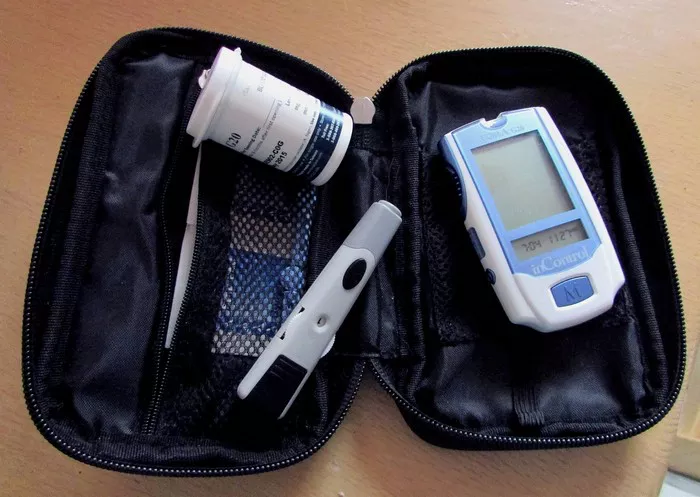Exploring the Standards and Variations in Blood Glucose Measurements
Monitoring blood sugar levels is crucial for individuals with diabetes and those at risk of developing the condition. Among the various methods available, finger stick blood sugar testing remains one of the most common and accessible ways to keep track of blood glucose. Understanding what constitutes a normal finger stick blood sugar level is vital for effective diabetes management and overall health. This article delves into the nuances of blood glucose levels, explaining the standards, factors affecting these levels, and their significance in diabetes management.
The Basics of Blood Sugar and Its Regulation
What is Blood Sugar?
Blood sugar, or blood glucose, is the primary source of energy for the body’s cells. It is derived from the foods we eat, particularly carbohydrates, which are broken down into glucose and absorbed into the bloodstream. Insulin, a hormone produced by the pancreas, plays a key role in regulating blood glucose levels by facilitating the uptake of glucose into cells.
Normal Blood Sugar Regulation
In a healthy individual, blood sugar levels are tightly regulated within a narrow range. After eating, blood glucose levels rise, prompting the pancreas to release insulin. Insulin helps cells absorb glucose, lowering blood sugar levels. Between meals and during physical activity, blood sugar levels decrease, leading to a reduction in insulin secretion and the release of stored glucose from the liver to maintain balance.
Finger Stick Blood Sugar Testing: An Overview
What is Finger Stick Blood Sugar Testing?
Finger stick blood sugar testing involves pricking the finger with a small, sharp needle (lancet) to obtain a drop of blood. This blood is then placed on a test strip inserted into a glucose meter, which measures and displays the blood glucose level. This method is widely used because it is quick, relatively painless, and provides immediate results.
Why is Finger Stick Testing Important?
Regular monitoring of blood sugar levels helps individuals with diabetes manage their condition effectively. It allows them to make informed decisions about medication, diet, and physical activity to maintain blood glucose within a target range. For those without diabetes, routine testing can help identify potential issues early, facilitating timely intervention.
What is a Normal Finger Stick Blood Sugar Level?
Fasting Blood Sugar Levels
Fasting blood sugar levels are measured after an individual has not eaten for at least eight hours. This test is often conducted in the morning before breakfast.
- Normal Range: For individuals without diabetes, a normal fasting blood sugar level typically ranges from 70 to 99 mg/dL (3.9 to 5.5 mmol/L).
- Prediabetes: A fasting blood sugar level between 100 and 125 mg/dL (5.6 to 6.9 mmol/L) is indicative of prediabetes, a condition where blood sugar levels are higher than normal but not high enough to be classified as diabetes.
- Diabetes: A fasting blood sugar level of 126 mg/dL (7.0 mmol/L) or higher on two separate occasions is diagnostic of diabetes.
Postprandial Blood Sugar Levels
Postprandial blood sugar levels are measured two hours after eating. This test helps evaluate how well the body manages glucose after a meal.
- Normal Range: For individuals without diabetes, a normal postprandial blood sugar level is usually less than 140 mg/dL (7.8 mmol/L).
- Prediabetes: A postprandial blood sugar level between 140 and 199 mg/dL (7.8 to 11.0 mmol/L) suggests prediabetes.
- Diabetes: A postprandial blood sugar level of 200 mg/dL (11.1 mmol/L) or higher indicates diabetes.
Random Blood Sugar Levels
Random blood sugar levels can be tested at any time of the day, regardless of when the person last ate.
- Normal Range: For individuals without diabetes, a normal random blood sugar level is usually between 70 and 140 mg/dL (3.9 to 7.8 mmol/L).
- Diabetes: A random blood sugar level of 200 mg/dL (11.1 mmol/L) or higher, accompanied by symptoms of diabetes such as increased thirst, frequent urination, and unexplained weight loss, can indicate diabetes.
Factors Influencing Blood Sugar Levels
Diet and Nutrition
Carbohydrate intake has the most immediate effect on blood sugar levels. Simple carbohydrates, such as sugars and refined grains, cause a rapid increase in blood glucose, whereas complex carbohydrates, such as whole grains, result in a slower, more gradual rise.
Physical Activity
Exercise increases insulin sensitivity, allowing cells to use glucose more effectively and lowering blood sugar levels. Both aerobic exercise and resistance training are beneficial for managing blood sugar.
Medications
Various medications can influence blood sugar levels. For individuals with diabetes, medications like insulin and oral hypoglycemics are used to lower blood sugar. Other medications, such as steroids and certain antipsychotics, can raise blood sugar levels.
Stress
Physical and emotional stress can lead to the release of stress hormones like cortisol and adrenaline, which can increase blood sugar levels.
Illness
Infections and illnesses can cause blood sugar levels to rise, as the body’s response to illness involves the release of hormones that increase blood glucose.
Hormonal Changes
Hormonal changes, such as those occurring during puberty, menstruation, pregnancy, and menopause, can affect blood sugar levels.
The Significance of Blood Sugar Monitoring in Diabetes Management
Preventing Complications
Consistent monitoring of blood sugar levels helps prevent both acute and chronic complications of diabetes. Acute complications include hypoglycemia (low blood sugar) and hyperglycemia (high blood sugar), both of which can be life-threatening if not addressed promptly. Chronic complications include cardiovascular disease, neuropathy, nephropathy, and retinopathy.
Adjusting Treatment Plans
Regular blood sugar monitoring provides critical data that can be used to adjust treatment plans. For instance, if blood sugar levels are consistently high, a healthcare provider might adjust the dosage of insulin or other medications. Similarly, diet and exercise plans can be tailored based on blood sugar readings.
Empowering Patients
Self-monitoring empowers patients by giving them control over their health. Understanding how different foods, activities, and medications affect their blood sugar levels can lead to more informed decisions and better adherence to treatment plans.
Challenges in Blood Sugar Monitoring
Pain and Discomfort
Despite advancements in lancet technology, some individuals find finger stick testing painful and uncomfortable. Exploring alternative sites, such as the forearm, can help reduce discomfort.
Cost
The cost of glucose meters, test strips, and lancets can be a barrier for some individuals, particularly those without adequate insurance coverage. Access to affordable supplies is crucial for effective diabetes management.
Accuracy
The accuracy of blood glucose meters can vary, and factors such as temperature, humidity, and user technique can affect readings. Ensuring proper meter maintenance and calibration is essential for reliable results.
Future Directions in Blood Glucose Monitoring
Continuous Glucose Monitoring (CGM)
Continuous glucose monitoring systems provide real-time data on blood glucose levels throughout the day and night. CGMs use a sensor inserted under the skin to measure glucose in interstitial fluid and transmit the data to a receiver or smartphone. This technology offers a more comprehensive view of blood sugar trends and reduces the need for finger stick testing.
Non-Invasive Monitoring
Researchers are exploring non-invasive methods of blood glucose monitoring, such as optical sensors, which measure glucose levels through the skin using light. While still in the experimental stages, these technologies hold promise for reducing the need for invasive testing.
Integration with Digital Health Platforms
The integration of blood glucose monitoring with digital health platforms allows for better data tracking and analysis. Mobile apps and cloud-based systems enable patients and healthcare providers to monitor trends, identify patterns, and make data-driven decisions.
Conclusion
Understanding what constitutes a normal finger stick blood sugar level is fundamental to managing diabetes and maintaining overall health. Blood sugar levels vary depending on the time of day, recent food intake, and individual health conditions. Regular monitoring, coupled with a comprehensive management plan that includes diet, exercise, and medication, is essential for preventing complications and achieving optimal health outcomes.
As technology advances, new methods of blood glucose monitoring are emerging, offering the potential for more accurate, convenient, and less invasive testing. Continuous research and innovation are paving the way for improved diabetes management and better quality of life for individuals living with this condition.
Related topics:
What Is A Good Range For Blood Sugar?























